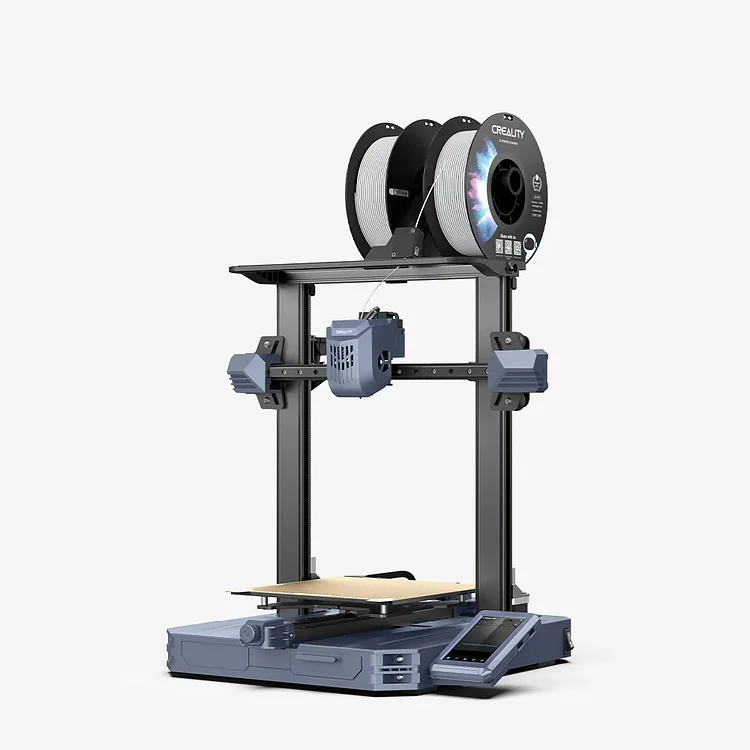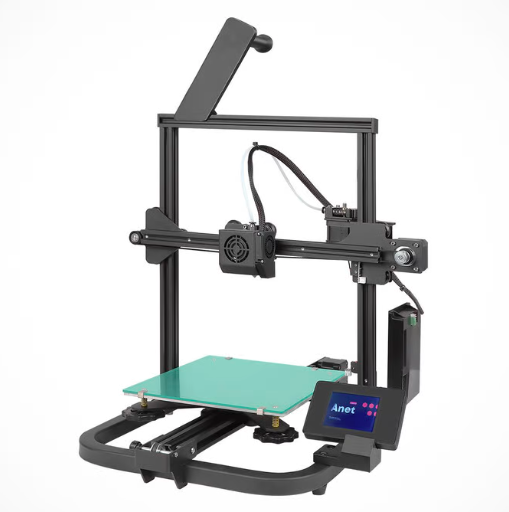Compare CR10 SE vs A8 V2
Comparison between the best 3D printers
Choose the best 3D printer at the best price. The cheapest 3D printers are here.
Buy a 3D printer here with 3D Fila.
 |
 |
|
| Model | CR10 SE |
A8 V2 |
| Printing Material | Filament | Filament |
| Buy Filament for Creality CR10 SE | Buy Filament forAnet A8 V2 | |
| Estimated price | $386,00 | $129,00 |
| Manufacturer | Creality | Anet |
| Release Year | 2023 | 2021 |
| Print Volume [mm] | 220x220x265 | 220x220x250 |
| Printer Size [mm] | 490x470x625 | 428x441x486 |
| Weight [kg] | 6,9 | 6,2 |
| Power Loss Recovery | NO | NO |
| Enclosed printer | NO | NO |
| Bed Leveling | Manual | |
| Filament End Sensor | NO | NO |
| Bed type | ||
| Power supply system | Direct Drive | Bowden |
| Standard nozzle | 0,4 | 0,4 |
| Maximum Nozzle Temperature [°C] | 300 | 230 |
| Maximum Bed Temperature [°C] | 110 | |
| Maximum printing speed [mm/s] | 600 | 150 |
| Filament holder | YES | YES |
| Camera for supervision | YES | YES |
| Recommended filaments | PLA, PETG, PET, TPU, PA Wood, ABS, ASA, PA, PLA-CF | PLA |
| Recommended slicers | Creality Print, Cura, Simplify3D, PrusaSlicer, Orca Slice | Cura, Simplify, Slic3r, IdeaMaker |
| Maximum Resolution [mm] | 0,1 | 0,1 |
| Processor | ||
| Display | Display touchscreen 2,8'' | |
| Power Supply | 110/220V / 250W | |
| Connectivity | USB, Wifi | SD / USB |
| Operating systems | Windows, Linux, Macbook | Windows, Mac, Linux |
| Date of registration in the system | 2024-07-02 | 2022-11-10 |
| Release date | 2023 | 2021 |
| Extra features | The Creality CR10 SE stands out for its printing speed of up to 600 mm/s, easy and intuitive assembly, direct extruder with double gears, hotend with hardened steel nozzle and ceramic heater, automatic leveling with CR-Touch and pressure sensor, and use of Creality OS firmware based on Klipper, with automatic input shaping calibration. It also includes Wi-Fi connectivity, a filament out-of-stock sensor and a robust structure with linear rails on the X and Y axes. | The Anet A8 V2 is a Cartesian-XZ type 3D printer with a build volume of 220 x 220 x 250 mm, Ender 3 design and V-slot assembly. It has a 32-bit motherboard and touchscreen interface, promising ease of use. It uses open source firmware and has thermal failure protection. It stands out for its cable organization and the absence of a heated bed, focusing on energy savings and PLA printing. It comes with an external power adapter, aiming at greater safety, especially for beginners and educational use. |
| Support for multiple colors and materials (AMS and CFS) | NO | NO |
Notes * |
||
| Cost-benefit | 7 / 10 | 6 / 10 |
| Hardware | 2.1 / 10 | 0.5 / 10 |
| Tela | . | . |
| Print volume | 3 / 10 | 3 / 10 |
| Performance | 5 / 10 | 1 / 10 |
Conclusion |
| In comparing the Creality CR10 SE and the Anet A8 V2, several notable differences emerge that can guide potential buyers in their decision-making process. The CR10 SE is a more advanced model, positioned at a higher price point, which reflects its superior features. Its capabilities include a significantly higher maximum printing speed of up to 600 mm/s, a wider temperature range for the nozzle and bed, and an extensive compatibility with various filament types, making it suitable for more complex projects. The printer's robust structure, with linear rails on the X and Y axes, and features such as a touchscreen display and multiple connectivity options enhance its usability and reliability. Conversely, the Anet A8 V2 is an economical option, focused on simplicity and accessibility, especially for beginners. Its design is notably user-friendly, with a lower entry price that makes it appealing for casual users and educational purposes. However, it has limitations in terms of material compatibility and print performance, reflected in its lower scores for hardware and performance metrics. Ultimately, the choice between these two printers hinges on the user's needs and budget. For those seeking high performance, advanced features, and versatility for a range of materials, the CR10 SE represents a worthwhile investment. In contrast, the Anet A8 V2 remains a solid choice for budget-conscious users who prioritize ease of use for basic PLA printing. Thus, each printer caters to distinct segments of the 3D printing market, allowing users to choose based on their specific requirements and financial considerations. |

